Category: Serap Korkmaz Erdoğdu
Turkish Traditions
-
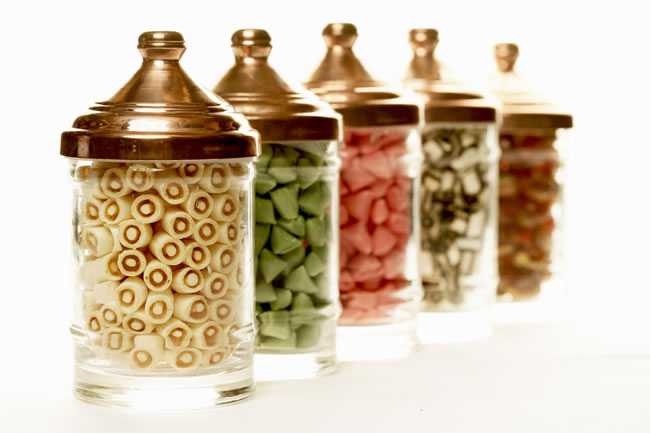
AKİDE
Akide Şekeri is a kind of candy that is one of the oldest products of the Ottoman cuisine. In the dictionary “akide” means faith, devotion and rule. In the Ottoman period Akide şekeri was used at the Sultan’s salary ceremony for the Janissaries. On the salary day, three-month wages were given to the Janissaries and in the palace yard, they were served rice and a kind of sweet made of gelatin. After the Grand Vizier and other statesmen also ate the meal, the sugar candies were presented to the Janissaries on plates. If they accepted the offered sweets, it was a sign that they were pleased. Later İstanbul confectioners began preparing sugar candy with spices like cloves and cinnamon, and thanks to famous confectioners like Hacı Bekir, sugar candy became quite popular. Even in our days, especially at bayram, it is a taste that little İstanbullu cannot forget. However, chocolate and other kinds of sweet have become more popular and they are taking the place of the sugar candy.
-
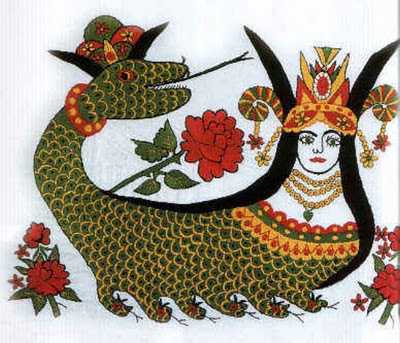
THE LEGEND OF ŞAHMERAN
The legend of Şahmeran comes from Mesopotamia. It has been told and retold in Mardin for hundreds and hundreds of years. The name “Şahmeran” actually comes from the Persian name “Şah-ι Meran,” which means “the shah of the snakes”.
Şahmeran was half a snake and half a very beautiful woman. She was a snake from the waist down, but from the waist upwards, a beautiful woman. Her portraits are traditionally hung on walls inside houses especially on girls’ bedroom walls. It is believed that hanging her pictures brings good fortune for them. Once upon a time, there was a tall and handsome boy called Tahmasp who lived in Mardin. One day, by mistake, he walked into a cave where thousands of snakes were sleeping. There he met Şahmeran. Tahmasp couldn’t hide the fact that he was attracted to her although she was a snake from the waist down.
Tahmasp remained in the cave for days on end, listening to Şahmeran tell incredible stories about the world and humanity. He was in awe, but when Azahmeran had told him everything and there was nothing left to tell, Tahmasp decided that he was missing the outside world and left. Even though Şahmeran didn’t like this idea, in the end, she accepted it.
So Tahmasp returned to the land where he used to live. But one day, the king of that land got very ill. One of the king’s assistants who was quite evil told the king that the only treatment that would cure him was to eat a piece of meat from the body of Şahmeran. The search began. Anyone who might know anything about Şahmeran was asked to come forward.
One day, as Tahmasp was at the hamam, he was identified by soldiers who spotted snake scales all over his body. The soldiers brought him to the king’s evil assistant. It turned out – not surprisingly – that the wicked royal aide’s real aim was not to make the king better, but to hear about the secrets of the world straight from the mouth of Şahmeran.
Tahmasp was tortured until he revealed the location of Şahmeran’s cave. So the assistant and the soldiers went to the cave and found Şahmeran who revealed her great secret, saying: “Whoever tears off a bit of flesh from my tail and eats it will be endowed with all the secrets of the world. But whoever takes a bit of flesh from my head and eats it will die instantly.”
No sooner were these words out of Şahmeran’s mouth than the villainous assistant cut the half-snake, half-woman into two pieces, and ripped a bit of flesh from her tail. Tahmasp, horrified by what he had just witnessed, bit into a piece of flesh from Şahmeran’s head so as to die immediately.

But what happened instead is that the king’s evil aide – having eaten a bite of Şahmeran’s tail – died on the spot while Tahmasp appeared completely unaffected. It turned out that Şahmeran had anticipated the king’s assistant’s plot and had seen to it that her lover, Tahmasp, inherited all her knowledge, while her enemy went to his death. However, in the wake of Şahmeran’s death, Tahmasp was so bereaved that he isolated himself away from the rest of humanity. Afterwards he is said to have become a legendary doctor, Lokman Hekim.
-
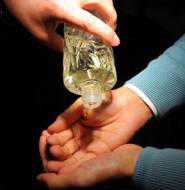
Offering Cologne
In Turkey, it is an important tradition to offer Cologne during guest visits, on bus trips and in restaurants. Its offering during holiday family gatherings and on funeral days has also become somewhat of a ritual. If you should visit a Turkish house, the first thing that you will be offered is Cologne and candy. This is meant to refresh a guest who is just off a trip and to help eliminate the germs that the outdoor conditions leave on
 hands. The candy that is offered along with the Cologne, represents the Turkish belief that a sweetened mouth will ensure the start of a sweet conversation.
hands. The candy that is offered along with the Cologne, represents the Turkish belief that a sweetened mouth will ensure the start of a sweet conversation. -

İstanbul Archeology Museums
Istanbul Archaeology Museums, which were established as Müze-i Humayun (Empire Museum) by the famous artist and museum director Osman Hamdi Bey at the end of the 19th century, were opened to public on June 13, 1891. Besides its importance as the “first Turkish museum”, it has an importance and specialty of being one of the museum buildings that are constructed as a Museum in the World. Today, it still protects its outstanding place in the World’s biggest museums with its works more than a million belonging to various cultures.
 In the museum collections, there are rich and very important works of art belonging to various civilizations from the regions from Balkans to Africa, from Anatolia and Mesopotamia to Arab Peninsula and Afghanistan that were in the borders of the Ottoman Empire.
In the museum collections, there are rich and very important works of art belonging to various civilizations from the regions from Balkans to Africa, from Anatolia and Mesopotamia to Arab Peninsula and Afghanistan that were in the borders of the Ottoman Empire. -
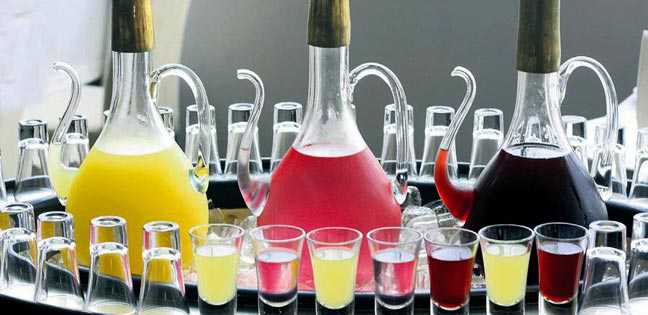
Ottoman Fruit Syrups (Şerbet)
Şerbet made from fresh fruit were an indispensable beverage in Ottoman palace cuisine as well as among the common people and were traditionally served to guests. Despite being on the brink of oblivion today, they still find a place on the table wherever authentic Ottoman cuisine is served. In villages in eastern Turkey, it is still true today that, after a dowry is agreed on, the groom’s family comes to the bride’s house and out comes a long-spouted brass or copper ewer, called an ibrik, filled with gül ş
 erbeti, or rose sherbet. The woman who has “drunk şerbet” has accepted the groom’s suit. Due to the Islamic ban on alcohol, for example, beverages in the Islamic world tended to consist of fruit juices and syrups. Fruit juice is of course consumed all over the world, but the fresh fruit syrups known as ‘şerbet’ appeared and were consumed in quantity among the Muslim communities of the Eastern Mediterranean, the Middle East and Central Asia. English travelers and envoys made the acquaintance of şerbet in the Ottoman period and borrowed the word directly into their own languages, thereby universalizing it. The renowned food historian Alan Davidson reports that ‘şerbet’ entered the Italian language as ‘sorbetto’ during the period of Ottoman-Byzantine-Venetian relations.
erbeti, or rose sherbet. The woman who has “drunk şerbet” has accepted the groom’s suit. Due to the Islamic ban on alcohol, for example, beverages in the Islamic world tended to consist of fruit juices and syrups. Fruit juice is of course consumed all over the world, but the fresh fruit syrups known as ‘şerbet’ appeared and were consumed in quantity among the Muslim communities of the Eastern Mediterranean, the Middle East and Central Asia. English travelers and envoys made the acquaintance of şerbet in the Ottoman period and borrowed the word directly into their own languages, thereby universalizing it. The renowned food historian Alan Davidson reports that ‘şerbet’ entered the Italian language as ‘sorbetto’ during the period of Ottoman-Byzantine-Venetian relations. -
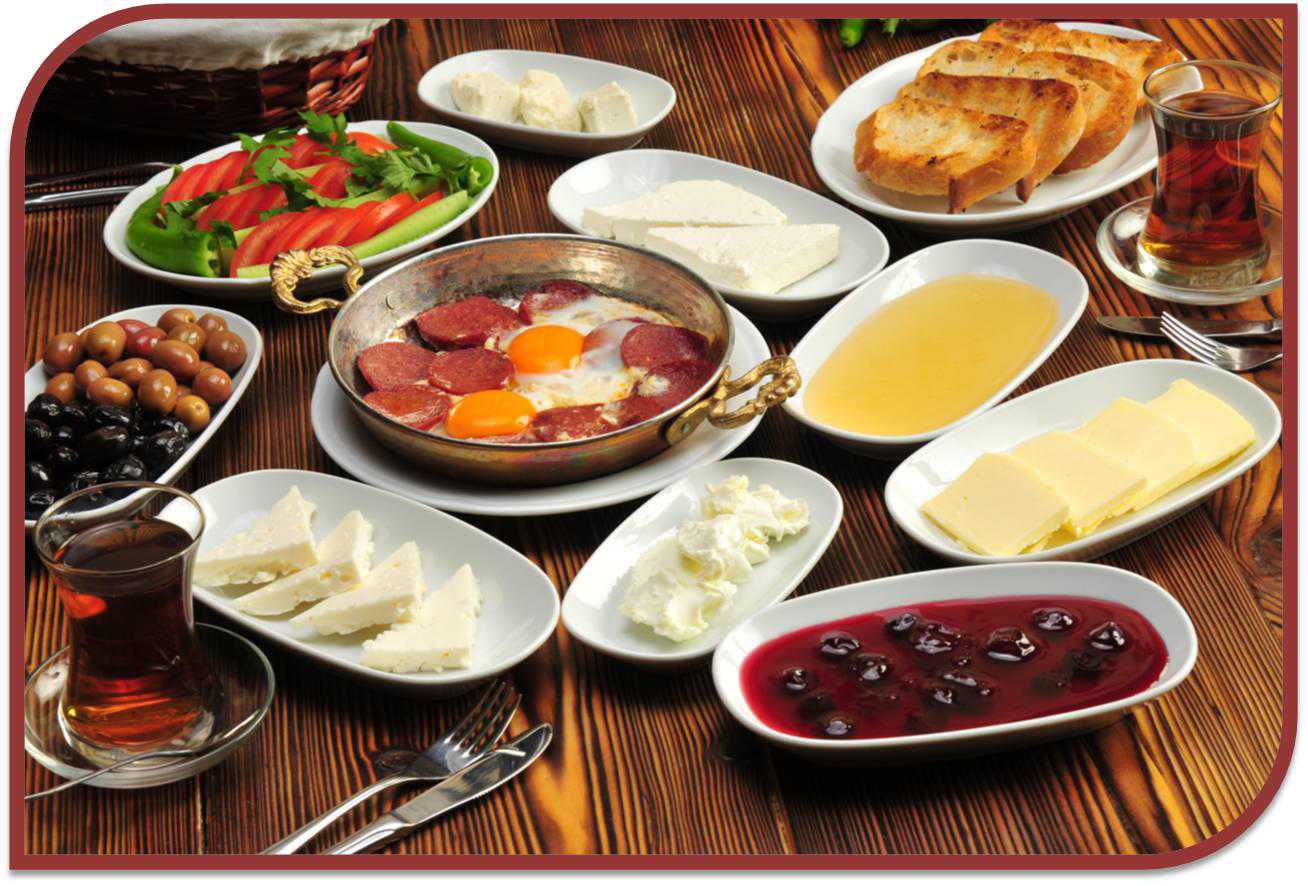
Turkish Breakfast
A typical Turkish breakfast consists of cheese (beyaz peynir, kaşar etc.), butter, olives, eggs, tomatoes, cucumbers, green peppers, reçel (jam/marmalade; a preserve of whole fruits) and honey usually consumed on top of kaymak. Sucuk (spicy Turkish sausage), pastırma, börek, simit, poğaça and even soups can be taken as a morning meal in Turkiye. Perhaps more so than traditional breads such as pide, a crusty white loaf is widely consumed. A common Turkish speciality for breakfast is called menemen, which is prepared with roasted tomatoes, peppers, olive oil and eggs. Invariably, Turkish Tea is served at breakfast. The Turkish word for breakfast, kahvaltı, means “before coffee” (kahve, ‘coffee’; altı, ‘under’).
